 |
 |
 |
 |
 |
 |
 |
 |
 |
 |
 |
 |
 |
 |
 |
 |
 |
|
 |
 |
 |
|
 |
 |
 |
|
 |
 |
 |
Grateful thanks to all those that have provided many of the articles, references and details in these pages
This is a non-profit site |
| |
| |
| |
| |
| |
| |
| |
|
 |
The life and times of Rev. John Craig 1805 - 1877
 |
|
 |
 |
Rev. John Craig
Courtesy Warwick Records Office |
|
 |
 |
|
A man possessing a powerful presence - loved debate and was no stranger to controversy.
Generally well like by his parishioners. He had a deep conviction for the needy and did his best to serve the underprivileged.
While he took on the opinions of experts and professionals on a number of matters, he would often, mistakingly, promote his own; so the more deferential would be carried along, swayed by his vigor and enthusiasm.
 |
|
|
The early years
John Craig was born in Ireland on 31st December 1805, in the Parish of Booterstown just south of Dublin in the coastal town of Black Rock.
 |
 |
| |
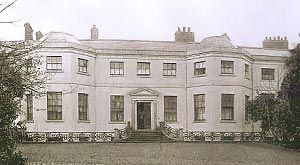 |
 |
 |
| |
Frescati House (possibly mispelled from the italian), Black Rock, Dublin. Controversially it was demolished in 1983. Today the site is occupied by a shopping centre bearing the same name.
Courtesy of the Irish Photographic Archive |
 |
 |
At that time his Scottish father, Robert, was managing a scholastic institution there, at Frescati House for "the sons of noblemen and gentlemen". This stately mansion was a fine example of the marine villa style residences erected for the wealthy of Dublin. Built for the provost of Trinity College it was later acquired in the 1750s by the Fitzgerald Dukes of Leinster. The interior of the house had fine examples of ceiling plasterwork and included a beautiful Georgian circular room. Despite its dereliction, it was controversially demolished in 1983 after a high-profile campaign to save it.
John's father was assisted in his work at Frescati House, by some of the fellows of Trinity College in Dublin. Robert's English wife, Isabella Davidson, who had been married before, was related to Viscount Melbourne and also had connections with the Lambe family.
Little is known of John's childhood only to say that there appear to be some indications throughout his formative years that he was a hard working and diligent student, liked and trusted by many of his peers and tutors. He had one other younger brother called Robert Rutledge, born in 1814 and four younger sisters.
He and his brother no doubt spent their early years being educated at their father's school. Later John attended Trinity College in Dublin, where he successfully graduated in Hebrew, English Composition, Divinity and the Classics.
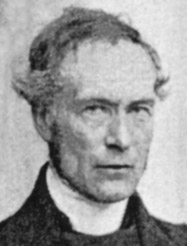 |
|
 |
 |
| Rev. John Craig as a young man |
|
 |
 |
It was his father that had tried unsuccessfully to persuade John to go into politics. So having decided to follow a religious career, like his father, he took his BA degree in 1826 and in 1829 was ordained a deacon by the Bishop of Elphin, after which he became the curate of Kilgeffin parish, County Roscommon in Ireland. His father never saw much of his spiritual development having died in 1829, in the same year as the Catholic Emancipation Act was passed allowing Catholics equality with protestants and the chance to sit in Parliament.
John Craig managed to speed his progress through the church by taking Lord Down's scholarship prize at the College which entitled him to an earlier ordination.
In 1830, he was ordained priest, and although there are not many stories relating to his time in Ireland as a young man, we know that it was in Dublin he married Miss Anne Jane Alley, his first wife. She was the grand-daughter of Mr Richard Underwood of Dublin and a distant relation to the Earl of Aran. In 1831, Ann bore Craig a son, named Robert, possibly after Craig's father.
 It was also in Ireland that on one occasion Craig had been denouncing the Pope in "emphatic and earnest terms". Several gentlemen had taken offense to this. One night after a visit to a friend, Craig realised he was being followed. His pursuers gave chase, discharging a gun at him. Fortunately they missed their target and Craig made it home safely. In some texts it suggests that the bullet broke a window to his property, and that it was this that led to a rumour about Ann Craig dying from the incident, either being shot or that the shock was so great. The reality was she actually died of cancer in Hastings in 1834, no doubt brought to this popular victorian seaside resort for the supposedly restorative powers of its sea water. It was also in Ireland that on one occasion Craig had been denouncing the Pope in "emphatic and earnest terms". Several gentlemen had taken offense to this. One night after a visit to a friend, Craig realised he was being followed. His pursuers gave chase, discharging a gun at him. Fortunately they missed their target and Craig made it home safely. In some texts it suggests that the bullet broke a window to his property, and that it was this that led to a rumour about Ann Craig dying from the incident, either being shot or that the shock was so great. The reality was she actually died of cancer in Hastings in 1834, no doubt brought to this popular victorian seaside resort for the supposedly restorative powers of its sea water.
In 1832 John qualified successfully in his MA degree. By 1834 he had moved to Cambridge in England where he also graduated with an MA.
back to top of page >>
Settling down
In 1834 while John Craig was a widower, he spent a great deal of his time preaching at various places in England and Wales. He had no fixed appointment within the church and it was during this period not long after his first wife had died that he met Miss Jane "Helena" Johnstone. She was the youngest daughter of the Rev. James Johnstone and had a personal fortune of £56,000 (about £2.8 million in 2003). It was obvious from the rapidity of their liaison and marriage in that same year on Christmas Day, that both were well suited.
|
 |
"Rev John Craig rector 1836 - 1839 introduced an organ to the church and in his time the square window in the south arcade walls were replaced by twin Norman style ones under each arch"
(History of Fetcham, 1998, Letherhead & District Local History Society Ed:- J C Stuttard)
|
The year 1834 was to have been the turning point in John's life. Now married again, it was not long before things started to look up. About this time he came into the possession of Eaton Chapel near Eaton Square in London and on a number of occasions during his services the chapel was attended by members of Parliament keen to hear him speak. Lady Olivia Bernard Sparrow, the wife of Brigadier General Robert Bernard Sparrow and an evangelical Anglican, had a deep seated belief in the education and care of the poor, as did Craig. At once she had noticed John and appointed him her chaplain.
| |
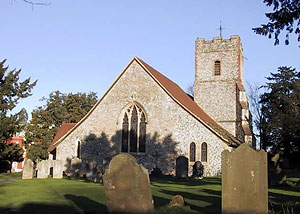 |
 |
 |
| |
St Mary’s church in Fetcham. It was here that his love for things “beautiful” was to take him on a life of refurbishment and building. He had the windows altered from square ones to a more sympathetic Norman-style. |
 |
 |
Two years later in 1836 she presented John with a position as vicar of St Mary's church in the small rural village of Fetcham, Surrey. He took it. Lady Sparrow had always entertained a high opinion of John and liked what he was trying to achieve. In one of her friendly gestures, she presented him with a book of spiritual songs. It contained an inscription by her. Indeed, this volume meant a lot to John and he treasured it for the rest of his life. It gave him solace even on his death bed many years later.
After three years, serving as a "popular" vicar at Fetcham, Craig who was becoming known as a successful evangelical preacher around the country, sought a more challenging and ambitious post, and so engineered an exchange of "livings" with the not-so-popular vicar of Leamington Parish, Robert Downes.Downes was born in Wheatley in 1795.
This move was not as easy as Craig had intended, stirring up hostilities in some quarters. It had even been suggested that Craig's motives were less than honorable. A little while later this prompted a friend of Craig to write in his defence, "And first, how little they know of Mr Craig, if they suppose the exchange of preferment which brought him to Leamington was one of pecuniary temptations. In possession of a most highly-favoured rectory, as to house, glebe land and general value; respected and beloved by all of his parishioners, with no one drawback upon his comfort and happiness, nothing could have induced him to leave it but a deep feeling of hope that, in a larger field, he might find a wider scope for usefulness in the vocation to which it had pleased God to call him.
During a short career of two years in his late parish he showed himself possessed of unbounded liberality, in proof of which (to enumerate a few of his generous acts) I have only to point to his building, at his own expense, a most commodious school-house on rectory land, to the support of which it is understood he still contributes; 2ndly, to his enormous outlay on the church of the parish, in order to beautify it, and increase the accommodation of the labouring classes; and 3rdly, when, finally, further improvement was arrested by the almost impossibility of removing a massive pillar, immediately in front of the reading desk,he handed over, unsolicited, £200 to a neighbouring brother clergyman, to assist him in increasing the free sittings in his church, a generous act which has been the means of calling forth the energies of the inhabitants of that parish to entirely re-pew and renovate their place of worship.
I feel convinced that the Vicar has only to be known to the people of Leamington to be appreciated, beloved, and respected in as high a degree as he was in the parish he quitted for Leamington Priors."
The exchange with Downes gives an insight into the mind and financial acumen of Craig and his determination to achieve his goals.
back to top of page >>
The Exchange
Although the income from Fetcham was a little less than that at Leamington, there were fringe benefits that Craig was willing to sacrifice in order to further his career. This included giving up his immense popularity, a compliant congregation of only 300; consisting of many resident gentry, with the whole land in the hands of a few parties; a united vestry with only one dissenter in the whole parish - and all this on top of an excellent house, gardens and stables in a delightful neighbourhood. Robert Downes, on the other hand, was leaving a large and somewhat challenging parish where even he had to admit that he was unpopular and where he had faced great opposition in his eighteen years of service. One would think that simply the prospect of an easier rural life might have persuaded Downes to exchange parishes without much ado. Yet Craig felt compelled to offer him the sum of £1,200 (about £100,000 in 2003) to compensate the financial difference between the two parishes, despite there being marked differences in living standards.
This arrangement was satisfactory for both men. However, from this point on things started to get a little tetchy.
|
 |
 |
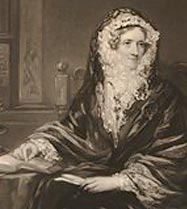 |
 |
Lady Olivia, born in 1774, was an extremely religious woman, a member of the evangelical tradition within Anglicanism. She is remembered today largely for the charitable building which she funded in Brampton, and for the Lady Olivia Bernard Sparrow Educational Foundation.
The site she chose for her chapel was where the old Georgian theatre was situated, at the junction of George Street and Brampton Road. This theatre had been built in 1801 but was considered by some townspeople to be rather ugly. The theatre was torn down and a chapel was erected in its place. Lady Olivia seems to have employed her own parson who gave communion without the consent of the Bishop of Ely.
Unfortunately when she died in 1863 she left no funds in her will for the maintenance of the chapel, and it was given to the parish of All Saints for use as a parish hall. In 1873 it was consecrated as a Chapel of Ease for All Saints church, dedicated to St John. The chapel was deconsecrated in 1925, and its tower was demolished. |
 |
|
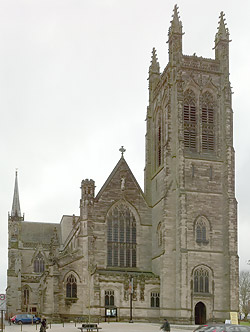 |
|
 |
 |
All Saints church, Leamington
Courtesy Greg Smye-Rumsby |
|
 |
 |
Before leaving for Leamington, Craig had made sure that his treasured school should have a means of financial support through subscriptions from a number of parishioners. The incumbent school master, Mr Turner, had an arrangement with Craig, that he should be provided with candles, coal and vegetables as part of his employment.
Downes agreed that he would continue to maintain and service the arrangements with the Fetcham school once he took over the parish. Similarly, Craig committed himself to paying Downes a rent for the Episcopal Chapel that had been set up in Leamington before the exchange.
However, only seven months later, Downes clearly had a different agenda, for he now intended to dismiss the school master, claiming that the school's running costs were excessive.
News reached Craig of Downes' intentions, prompting him to write to Downes on 18th December 1839, "Rev. Sir, - It having reached me that you have not only dismissed the school-master of Fetcham school, but also, that you have stated your intention of employing a Mistress, and that only to teach the girls of the parish, and thus break up the Boys' division of the school, and leave them either to wander to Bookham, or elsewhere for instruction, may I request to know from yourself officially, if this rumour, or rather I should say intelligence, be correct, in order that I may act accordingly. I remain, Reverend Sir, Your obedient servant, John Craig. p.s. Unless I hear a contradiction or explanation of these reports, by this day week, the first step I shall take is to forward your written pledges to the Bishop of Winchester, and act in other respects as I may be advised, or deem advisable. J C".
Downes was now forced to reply on 22nd December 1839, but clearly wanted to wash his hands of any responsibility.
"Sir, - Turner quits his situation at Christmas, after which the girls will receive their education at Fetcham school, and the boys be sent to the National School at Bookham as heretofore. If you think that this arrangement justifies you in withdrawing your promised support from the school, you are at liberty to do so. Your obedient servant, R. Downes."
| |
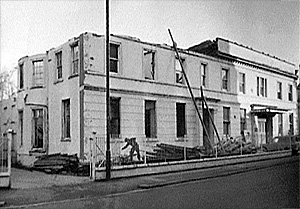 |
 |
 |
| |
A picture of the vicarage during its demolition. It was here that Craig spent much of his life in Leamington. |
 |
 |
Craig, on hearing this, and having received advice from the Bishop that he had no legal right over the Fetcham parish now that he was no longer vicar of Leamington, claimed that Mr Downes was in the same position with regard to the Episcopal Chapel in Leamington. So he threatened to cease paying rent for the latter unless the schools at Fetcham were maintained.
This incident in Craig's short time in Leamington did not stop there. Indeed, the situation became decidedly heated as the correspondence between the two men found its way into the press, proving a source of great annoyance to both parties.
| |
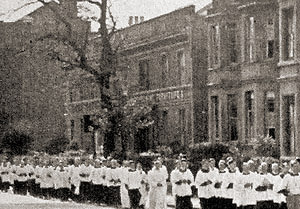 |
 |
 |
| |
The vicarage as a backdrop for a procession in Priory Terrace. |
 |
 |
From this episode we may infer that Craig was a man full of passion and determination, trusting that his aspirations would be met by others in equal measure.
The need to set down terms and conditions in unambiguous detail that would be unquestionable in the eyes of others, eluded him. Indeed, it would also seem that he believed that any little differences, obstacles or problems could be remedied by monetary consideration.
back to top of page >>
The Man
 Craig was a tall man, sparsely built and walked with rapid, tottering steps. He had a stoop which made him appear shorter in stature than he really was. He was not blessed with the best of health and did not take well to criticism. Craig was a tall man, sparsely built and walked with rapid, tottering steps. He had a stoop which made him appear shorter in stature than he really was. He was not blessed with the best of health and did not take well to criticism.
He often spoke to himself while walking, and even on occasion gestured as if in conversation with another "invisible" person. He would speak to people in the street and make them feel at ease. He had a deep conviction for the poor and needy and did his best to serve the underprivileged.
His voice was noted as thin and weak in quality, not that of an orator, but equally compensated by his eloquent, articulate and at times heated out pourings, although, these were neither venomous nor malicious. He was not adverse to hot contested debate and quite ready to argue his point clearly and precisely.
|
 |
 |
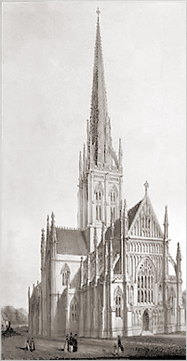 |
 |
| A competition for the design of All Saints Church in Leamington was organised and won by Rev John Craig with plans drawn up by an architect. |
 |
 |
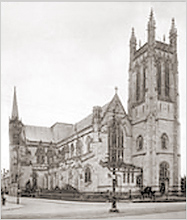 |
 |
| From a similar angle it is easy to see the the design was never finished - it could never be finished as the proposed huge central tower could not have been supported by the church's roof. |
 |
|
For part of his life in Leamington he was accompanied on many occasions by his dog - even bringing it into All Saints church during services.
However, a phrase that best sums up Craig, is, "if you want a job doing well, then do it yourself". For while he took on the opinions of experts and professionals on a number of matters, he would often, mistakingly, promote his own; so the more deferential would be carried along, swayed by his vigor and enthusiasm.
back to top of page >>
The Church
One of the first changes Craig made to the parish was to abandon the charges on the pews at the Episcopal chapel - a move that was not met with unanimous agreement by members of the vestry, but one which was overwhelmingly welcomed by the parishioners. Another move was to greatly improve the National School which had been set up in 1822. The old and unused Workhouse was more than suitable for the needs of the school and Craig made arrangements for it to be moved there. He also felt, that for him to conduct a full and effective ministry, the parish church of All Saints would have to be improved to allow for the growing congregation. The structure had been enlarged twice prior to 1839 but was already considered insufficient and "unsightly". Leamington was a growing and fashionable town, popularised for its spa. With that in mind Craig, at his own expense, introduced a surpliced choir, greatly enhancing the ambience of the services.
And so, in 1842, he sought the quickest and most cost effective solution - enlarge the size of the diminutive chancel - this would add greatly to the number of pews, while keeping the costs to a minimum. However, certain members of the vestry felt that instead of patching up the old church, consideration should be given to completely rebuilding it from scratch. So great was the feeling, that they all gave assurances of their full support. It was agreed that as long as no expense fell to the parish, Craig could recoup his costs by taking a rent on the pews. This was later to prove yet another fractious and vitriolic episode in Craig's life.
back to top of page >>
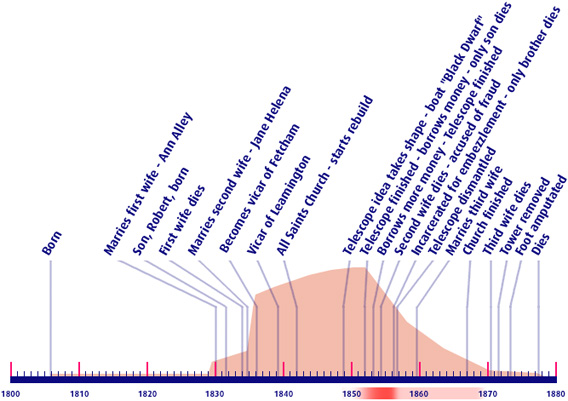 |
 |
A timeline showing key events in John Craig's life whilst also revealing his relative wealth in pink.
courtesy Greg Smye-Rumsby
 |
At the age of fourteen in 1845, Craig's son, Robert, was sent off to gain an education at Rugby School. Nothing is known of the time he had there. However, with his father absent, making many excursions all over the country, there must have been little change in his everyday life.
The work on the north transept and Angel Tower began in 1846. Craig was virtually his own architect and keen to give the church the grandest magnificence in keeping with "the glory of God". He borrowed many of its architectural elements from other buildings, especially from those in Europe. The huge Wheel Window, for example, was based on one in the Cathedral at Rouen, in France.
After three years, the first stage of the church's reconstruction was completed, with the chancel being finished in 1851. No further building work on the church was to take place for another eighteen years. Disputes and lack of funds caused long delays in building. The Bishop's Proctor even reported that the galleries were propped up with scaffolding and the font was unfit for use. Craig's original plan for the church was over-ambitious and even led to its temporary closure.
It was a period of Craig's greatest wealth and influence, but things were soon to change for the worse.
back to top of page >>
|
 |
|
The Difficulties
John Craig had a boat, which he loved to sail in the English Channel. He made a number of visits to the south coast; on one occasion, in Brighton, he even had a silhouette likeness made. Somewhat strange, therefore, that he chose Leamington for his ministry, as it is one of the furthest towns from the sea! His sailing vessel, the Black Dwarf, was a pleasure he loved to share with many of his friends and family. Indeed, his son Robert was taken by the same love of the sea and became a midshipman on her majesty's ship, Sampson. But, unfortunately, Robert's career in the navy was to be short-lived.
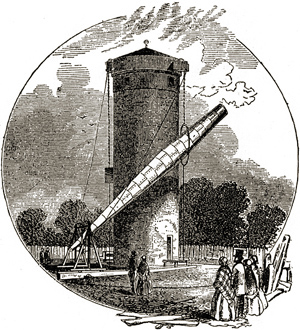 It was in 1849 that Craig had probably started his plans for his telescope at Wandsworth, later to bear his name. It would also have been about this time that he must have started to think about those experts that might be employed to help. Unfortunately, there is no record of Craig's deliberations or discussions with those that were eventually chosen to work on the project. It was in 1849 that Craig had probably started his plans for his telescope at Wandsworth, later to bear his name. It would also have been about this time that he must have started to think about those experts that might be employed to help. Unfortunately, there is no record of Craig's deliberations or discussions with those that were eventually chosen to work on the project.
1852 was indeed a memorable year for the vicar. In March, work on his telescope had started in earnest, after he had secured a piece of ground there, through the generous understanding of the 4th Earl Spencer. It was also in March that he and his wife borrowed £5,919 17s 9d (about £300,000 in 2003) from the trustees of their marriage settlement. Although its appropriation is not known, the date may indicate its use in the telescope project. The trustees were John Craig's brother, Robert Rutledge Craig, Francis Henry Mitchell and James Johnstone. At the time, Robert, who had trained as a barrister in England, was living in British Guiana, carrying out his duties as Attorney General.
In Leamington, members of the vestry had become suspicious of the parish's money management, which was later to haunt the vicar. In one incident at a vestry meeting in May 1852, they referred to the financial assistance that Craig had offered for the church's reconstruction; in that he would pay for any shortfall in its costs. But the vicar repudiated the claim, saying that he had only suggested he would donate a sum of £300 per year for three years.
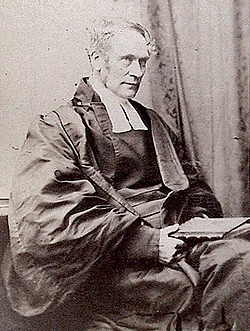 |
|
 |
 |
| Craig at the height of his influence in his parish and Leamington. |
|
 |
 |
By this time, Robert, Craig's son, had returned home from the navy because he had become seriously unwell. He had contracted tuberculosis of the lungs; and on 8th May 1852, after a painful bout of coughing up blood, he died. This was a huge blow for Craig who was not a well man at the best of times.
His son had meant a lot to him and on hearing that Robert's desire was to join the navy, not the church, Craig had had the love to understand and embrace his son's wishes.
On 8th November, that same year, a court action pertaining to an incident in 1847 was brought to the Warwick Assizes. It was alleged that Craig had obtained monies to the sum of £1,050 (about £54,000 in 2003) through deception - a claim he strongly denied.
Craig's telescope was completed around August 1852 and he was keen to start using it as soon as possible. Interestingly, he had secured a further loan in the form of a mortgage from two of the original trustees - his brother and Francis Mitchell for £9,816 7s 10d (about £500,000 in 2003) also possibly for the telescope project.
However, only months later in April 1853, Craig's only brother, Robert, having returned to British Guiana, had taken a turn for the worse - his health was causing serious and prolonged indisposition.
By 1853, accusations of mismanaging church funds had taken on a new emphasis.
Craig was soon to suffer yet another bereavement. His wife, Helena, as she was known, was well liked in the parish and had assisted her husband in many areas of its development. But she too, had fallen ill and on 7th March 1854, she died at the Priory of consumption. Her remains were laid to rest at the end of the chancel of All Saints church. Although later these were reburied in the ‘new' larger cemetery in Leamington.
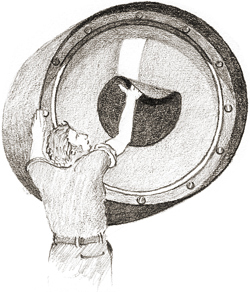 |
|
 |
 |
The huge lens still had to be stopped out to try and make it work a little better.
Courtesy Greg Smye-Rumsby |
|
 |
 |
Problems with the telescope were now becoming insurmountable. By 1854 a mere eighteen months after it had been finished, its usefulness was coming into question. While it had served to confirm the existence of the "C" ring around the planet Saturn which William Bond and his son George had discovered a few years earlier in the United States, it was proving a difficult instrument with which to do astronomical research. The under-corrected 24-inch lens was being stopped down by having a dark patch placed over its centre in an attempt to improve its performance. Although, efforts at taking photographs through it were partially successful, mainly through the diligence of those involved, its cumbersome nature was proving too much for most and those involved had effectively given up on it.
John Craig's brother had been granted 7 months leave to return home to England in November 1855 to nurse an illness which was becoming increasingly troublesome. Unfortunately he was never to recover from his ailment, and on 13th March 1856, at the tender age of just 39, he died at a friends house in Camberwell in London of various complications of the lung, heart and liver.
back to top of page >>
Thrown into jail
 |
 |
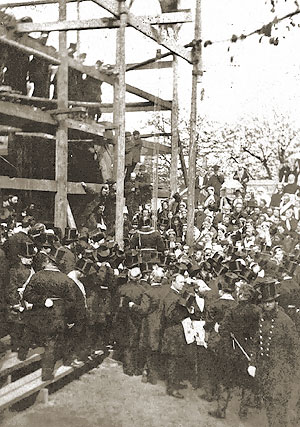 |
|
 |
 |
All Saints - Laying the Foundation Stone preceding the final stage of the church's reconstruction in which John Craig played no part.
Courtesy Warwick Records Office |
|
 |
 |
By April 1856, Craig's troubles were being compounded. He had to attend Warwick Assizes for an arbitration judgment in a case of fraud.
While returning home to Leamington, Craig was arrested on a charge of contempt of court on the 19th July. He was taken to Warwick jail where he was incarcerated.
In prison, his lawyers, Vizard & Garnham of Lincoln's Inn, were heavily in his credit and keen to secure their interests. So in August, to recoup their outstanding costs should anything untoward happen to Craig, set up an agreement mortgage whereby certain of Craig's properties were assigned to them.
Craig made arrangements for his release on 21st September, some six weeks after he was first arrested. He immediately made his way to All Saints where he conducted a service both in the morning and in the evening. Both services were attended by a large congregation no doubt swollen by those with a morbid curiosity.
back to top of page >>
|  |
|
...and finally
In 1876 the first indoor ice rink opens in London. The ice was made through an expensive process of sending a mixture of glycerin and water through copper pipes. It seems that in the same year the ageing Craig opens an ice rink in the grounds of Priory Terrace in Leamington just as another entrepreneurial ice rink is started in Northampton.
Driven by financial pressure it was an opportunity to Craig that, "This rink will not only go on at the Priory, but evidently produce me a handsome income. I really had not funds to continue my account with the bankers, but it will soon be the reverse".
While Craig was clear that the rink needed to be finished and ready by the September of 1876, it was not completed until December missing out on all the gala that a summer opening would have provided. Even Craig knew of this opportunity stating, "I am advised not to open it until the first week in September, as there is a desire to make a gala day of the opening, and first-class skating will be manifested on the occasion by tip-top London skaters. It used to be the summer season in Leamington, but now the months of July and August do for Leamington just what they do for the West End of London and every one is away. I can reckon at least a dozen Leamingtonians who are well-wishers to the rink, who are off to the seaside: Will you go? Will you go? as the song says".
As with most ventures by Craig this was not a success.
Although Craig lived as the parish’s vicar until he died in 1877, for a number of years the running of the church was left to his curate. In his final years he seems to have become a grumpy, lonely old man embittered by a lifetime of disappointment in which the telescope played a major role.
back to top of page >>
|
 |
|
|

